Art Fairs
‘The Seattle Art Fair Is Still Kicking’: How the Event Is Recalibrating After the Death of Founder Paul Allen and High-Profile Gallery Defections
It was a year of transition for the Pacific Northwest event.
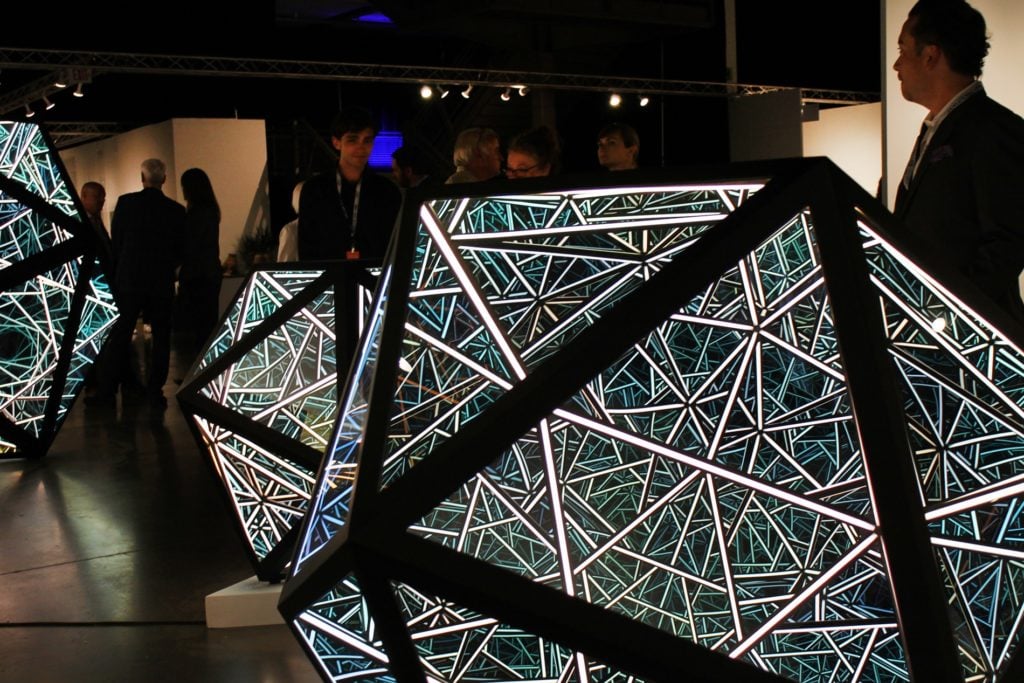
It was a year of transition for the Pacific Northwest event.

Rain Embuscado

In Seattle’s art world and beyond, the subject of whether or not the Seattle Art Fair could withstand losing its founder, the billionaire philanthropist Paul Allen, has been the subject of a great deal of public chatter. Gagosian, Zwirner, and other blue-chip powerhouses all elected to withdraw after the passing of the Microsoft co-founder. The high-profile defections deepened speculation that the event was a “single-collector fair” and that Allen’s ambitious brainchild might well be marching to an early end.
This was the backdrop for the opening of the fair at Century Link Field on Thursday afternoon, making this fifth outing—and perhaps the Seattle Art Fair’s most closely scrutinized since its inaugural edition in 2015. With 106 exhibitors, the size of the fair remained largely unchanged, top-notch dealers notwithstanding. According to organizers, attendance this year also matched the previous edition’s turnout.
The Seattle Art Fair remains under the management of Allen’s private corporation, Vulcan Inc., which is also responsible for overseeing the Seattle Seahawks, the Seattle Cinerama, and myriad other initiatives either founded or adopted by Allen’s estate. According to a statement given to artnet News by Greg Bell, Vulcan’s chief curator, the fair will continue next year. Sponsor AIG had already announced that it was extending its support as the fair’s presenting partner through 2021.
So, what were the weekend’s festivities like, on the ground? Impressions varied. Critics such as Juliet Helmke of the Observer maintain that the fair endures as “a site for discovery.” But is the thrill of discovery enough to keep it going? Some in attendance told artnet News that the absence of key players directly compromised the fair’s viability as a destination on the global art circuit. Overall, this was a year when the fair felt like it was finding a new equilibrium, reframing its pitch to the art world, locally, nationally, and internationally.
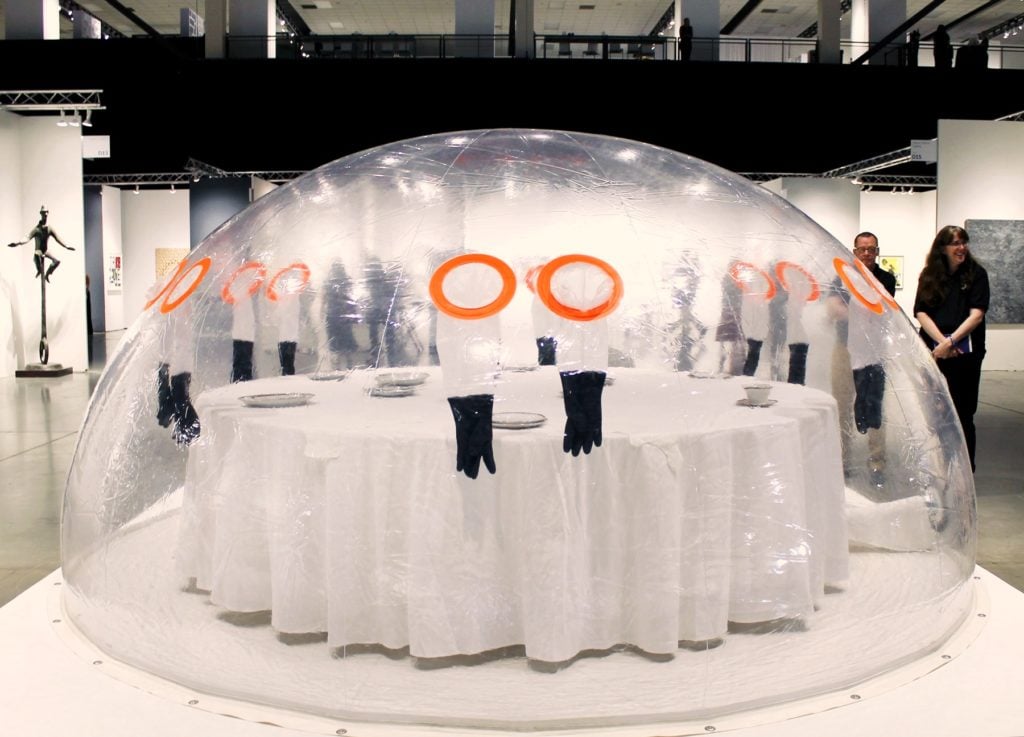
Bigert & Bergström, Incubator for Earthquakes (1992). Image: Rain Embuscado.
Last year’s edition was highlighted by a program of special projects that included blockbuster battle-bots and perverse visions of present-day dystopias. The fair’s artistic director, Nato Thompson, opted to conjure a markedly more understated tone for his second year at the helm.
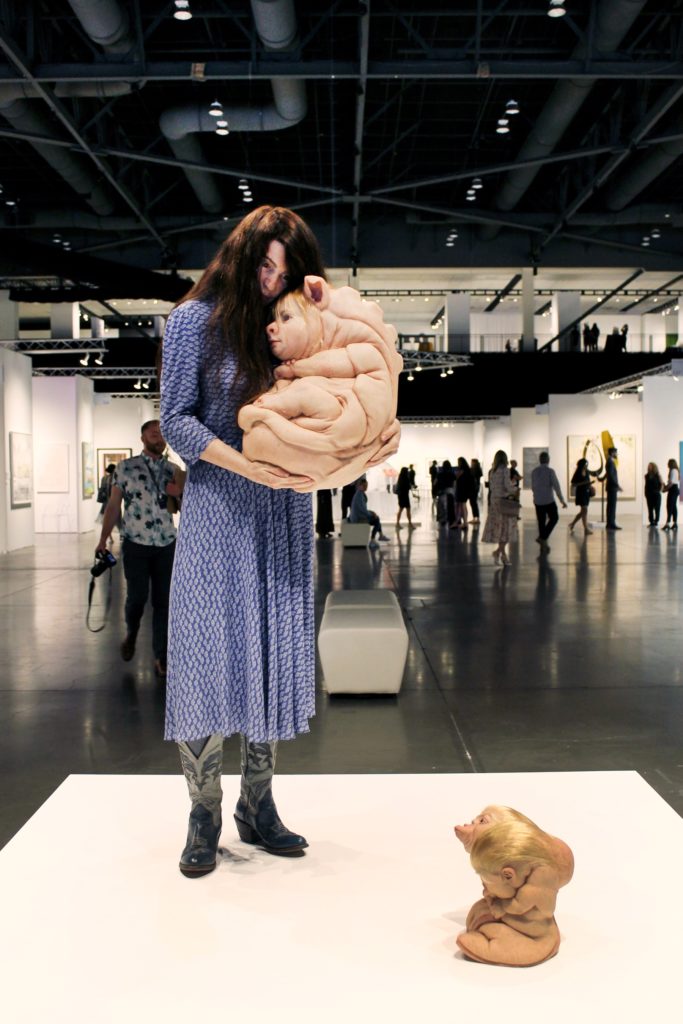
Patricia Piccinini, The Bond (2018) and The Loafers (2018). Image Rain Embuscado.
“I was interested in the ‘post-human’ as a trajectory, so we have more mutants than computers,” Thompson said in an interview with artnet News, citing the wunderkammer, or “cabinets of curiosities,” as the thematic thread tying the fair’s special projects together.
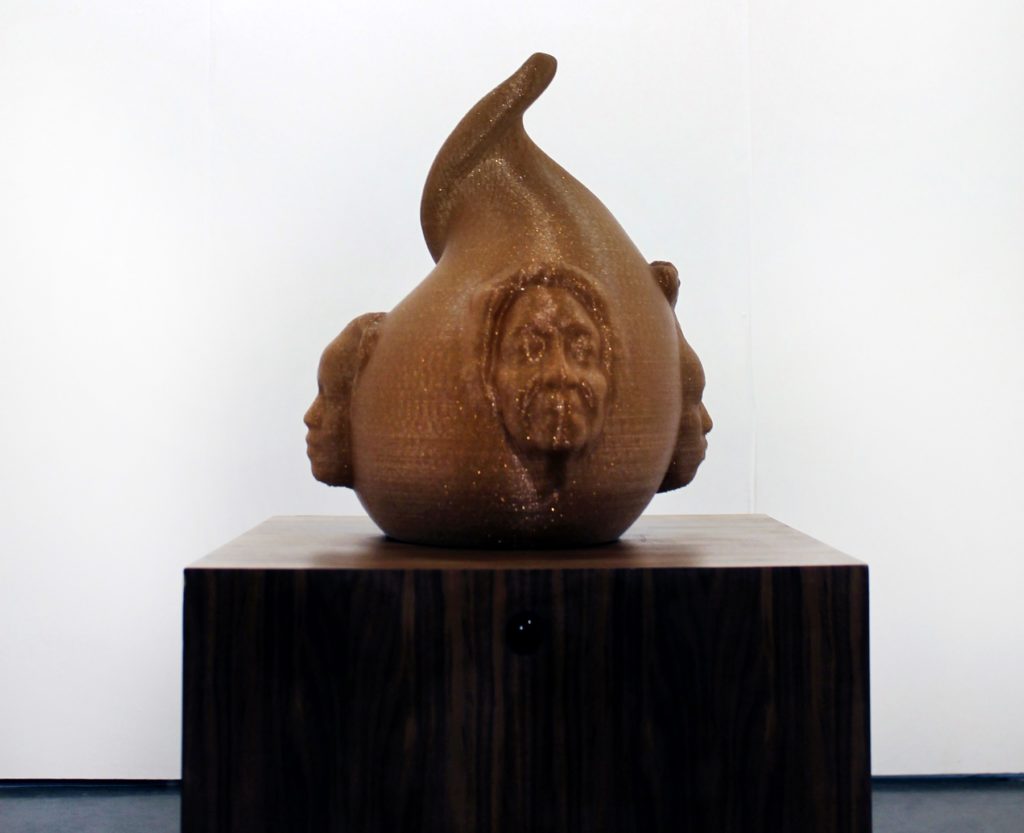
Installation view of Stephanie Dinkins’s Not the Only One (2018). Image: Rain Embuscado.
Notable highlights among this year’s programming included Patricia Piccinini’s sculptures, The Bond (2018) and The Loafers (2018), which greeted attendees at the venue’s entrance; Stephanie Dinkins’s AI-powered project, Not The Only One (N’TOO), and the performer known as Bread Face’s “Self-Facing” performance series—all of which (sited in their own, semi-defined corners of the floor) captivated, mesmerized, and confounded swathes of spectators throughout the weekend.

View of Spectres of the Postnatural: Gynandromorph Butterfly (2019) by Richard Pell. Image: Rain Embuscado.
Richard Pell’s “Spectres of the Postnatural” series, which featured images of organisms irreversibly altered by human intervention (and augmented by 3-D glasses), also stood out among the flock.
That Thompson infused this year’s edition with interactive displays is, invariably, a nod to his curatorial roots in socially engaged art. In this new, post-Paul Allen Seattle Art Fair, his decision—whether by design or accident—could be registered as a reminder that art can function beyond its monetary dimensions, and engage the audience with important issues.
Spirits were high among the galleries interviewed by artnet News on opening night, including Muriel Guépin Gallery (New York), Simyo Gallery (Seoul), and Projects Plus Gallery (St. Louis). In an early, promising development, Greg Kucera—a leading figure in the Pacific Northwest’s art circuit—revealed that he had already sold five paintings within the first 45 minutes of the collector’s preview.
But by Sunday morning, confidence had dimmed for a number of hopeful dealers. Hannes Kuckei, owner of the Berlin-based gallery Kuckei + Kuckei, concluded that this year’s edition was the weakest he’d seen, attributing the fair’s decline to the absence of household names like Gagosian and Zwirner. Charles Davidson of New York’s Davidson Gallery, who has been an exhibitor since the fair’s debut year, also said he sensed a dip in traction.
Other galleries suggested that there were, in fact, gains to be had.
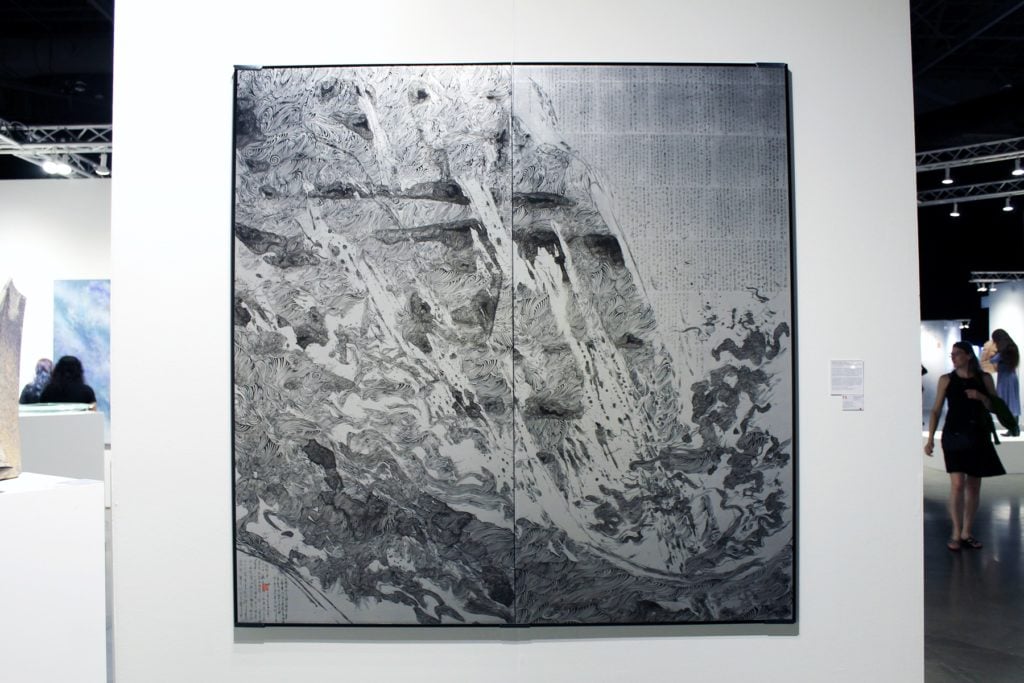
Installation view of Takafumi Asakura’s Japanese Ink Painting at Yufuku Gallery’s booth. Image: Rain Embuscado.
Wahei Aoyama, owner of the Tokyo-based Yufuku Gallery, told artnet News Sunday morning that 11 works had sold since the preview, exceeding both the gallery’s expectations and sales from fairs past. “I think people underestimate the Seattle art market,” Aoyama said. “Some of our clients only come to Seattle. If you want to reach these clients, you have to come to them.”
Yufuku Gallery’s story isn’t isolated. Karyn Behnke, director of Joshua Liner Gallery in New York, told artnet News that its solo presentation of Heather Day’s paintings, which ranged from $4,500 to just over $10,000, had nearly cleared out well before closing day. Jessica Shea and Megan Des Jardins of Seattle’s Winston Wächter Gallery also lauded this edition as their “best year yet,” with works by Ethan Murrow, Claire Partington, and Peter Gronquist fetching up to $28,000 apiece.
Elsewhere on the floor, Anthony James’s crowd-pleasing, geometric sculptures at Melissa Morgan Fine Art’s booth reportedly attracted the interest of prominent museums and tech firms in the area. Gallery director Alec Longmuir said that the light-based works, which command anywhere from $85,000 to $235,000, depending on size, are slated for larger, public venues across the city of Seattle.
“We did great,” Longmuir said. “You’ve got young, up-and-coming money here—young collectors. And that’s a good thing.”
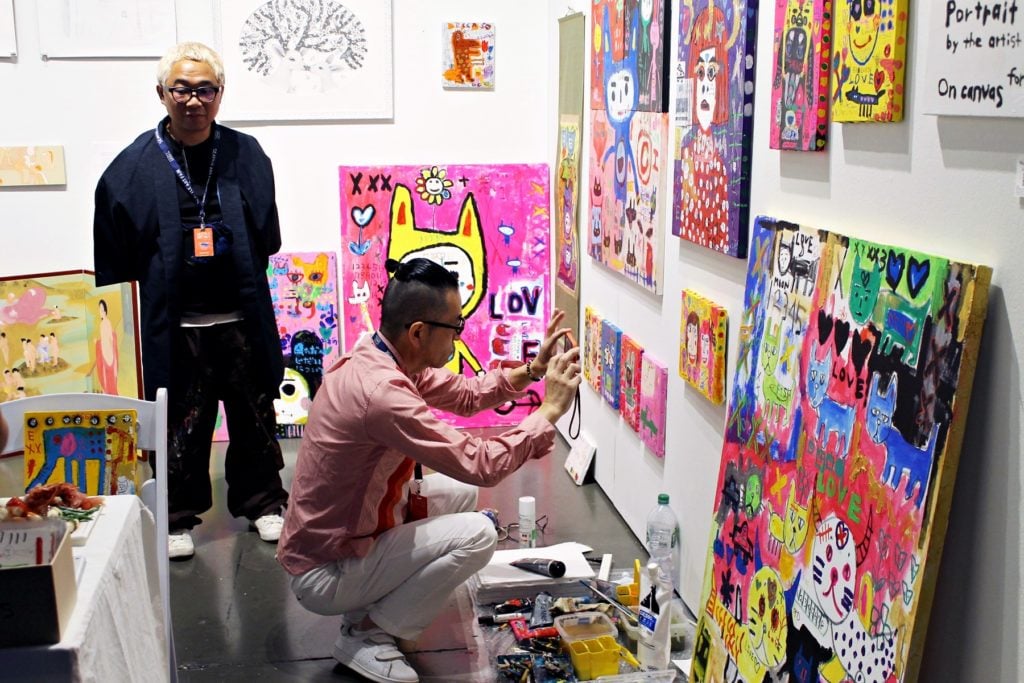
Installation view of OHSHIMA Gallery booth. Image: Rain Embuscado.
Despite the shifting exhibitor list, most observers interviewed by artnet News emphasized the fair’s relevance to the region’s arts ecology, framing it as an outpost for dealers, collectors, and artists in the greater Northwest—and beyond.
“We wish galleries like Gagosian and Zwirner were still coming back,” Seattle-based art dealer Greg Kucera said in an interview. “But the scene goes on without them. It creates a different hierarchy of quality to the fair. It allows northwest galleries to shine.”
One northwest exhibitor that returned to the fold for 2019 is the Portland-based Russo & Lee Gallery. According to the gallery’s owner, Martha A. Lee, sales were strong this year, pulling in deals that ranged from $1,200 to $18,000. When asked about the fair’s future, Lee insisted that it was too early to say whether or not the fair was “going to be a ‘regional node.’”
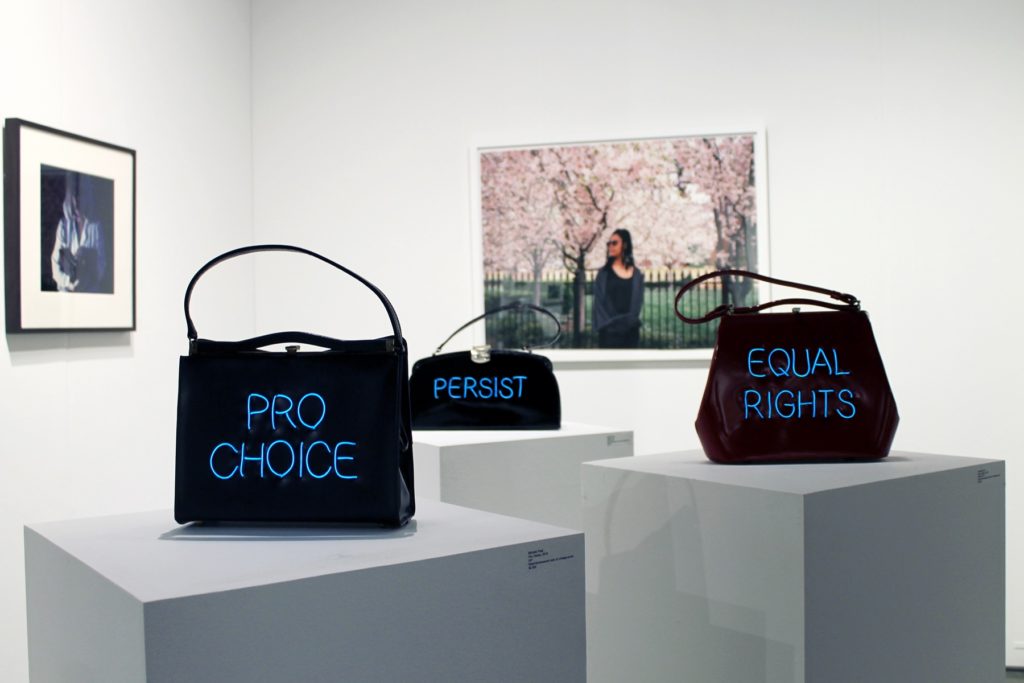
Installation view of selected works by Cindy Sherman, Michele Pred, and Katherine Simone Reynolds at the Project Plus Gallery booth. Image: Rain Embuscado.
Margaret Sherer, curatorial and gallery associate for the St. Louis-based Project Plus Gallery, posits that while the Seattle Art Fair does support regional interests, it also serves as a direly needed opportunity for galleries otherwise overlooked in “fly-over states.”
“We’re trying to weed out [events] that are not mandatory to attend,” Sherer said, adding that the cost of attending art fairs has prompted the gallery to reevaluate its financial priorities. “The Seattle Art Fair is still kicking. We’ve been happy with our sales here, and people here are open about the art that’s coming out of St. Louis and the Midwest.”
Notably, Sherer disclosed that the gallery’s sales this year included works by St. Louis-based artist Katherine Simone Reynolds, outshining work by other, higher-profile artists represented in the booth, including prints by the likes of Marilyn Minter and Cindy Sherman.
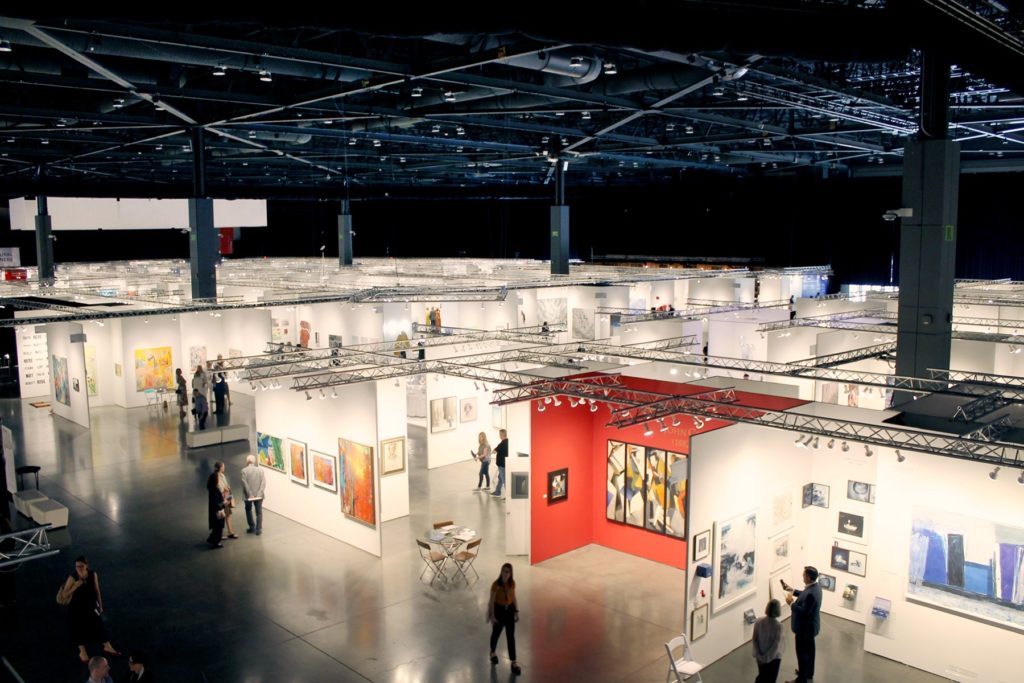
Mezzanine view of the Seattle Art Fair 2019. Image Rain Embuscado.
Whether the fair will regain the interest of the ultra-high-end tier of galleries is anybody’s gamble. Tapping into Seattle’s cornucopia of tech-driven wealth—long considered the primary lure for art dealers braving the trip—remains a puzzle to be solved.
In the meantime, Seattle Art Fair’s director, Max Fishko, sees nothing wrong with keeping things local. “There’s a lot of success to be had by growing in a direction that serves the city,” he said. “We always want to keep the regional focus. Seattle is a great city to be in, and it’s a great moment to be there.”